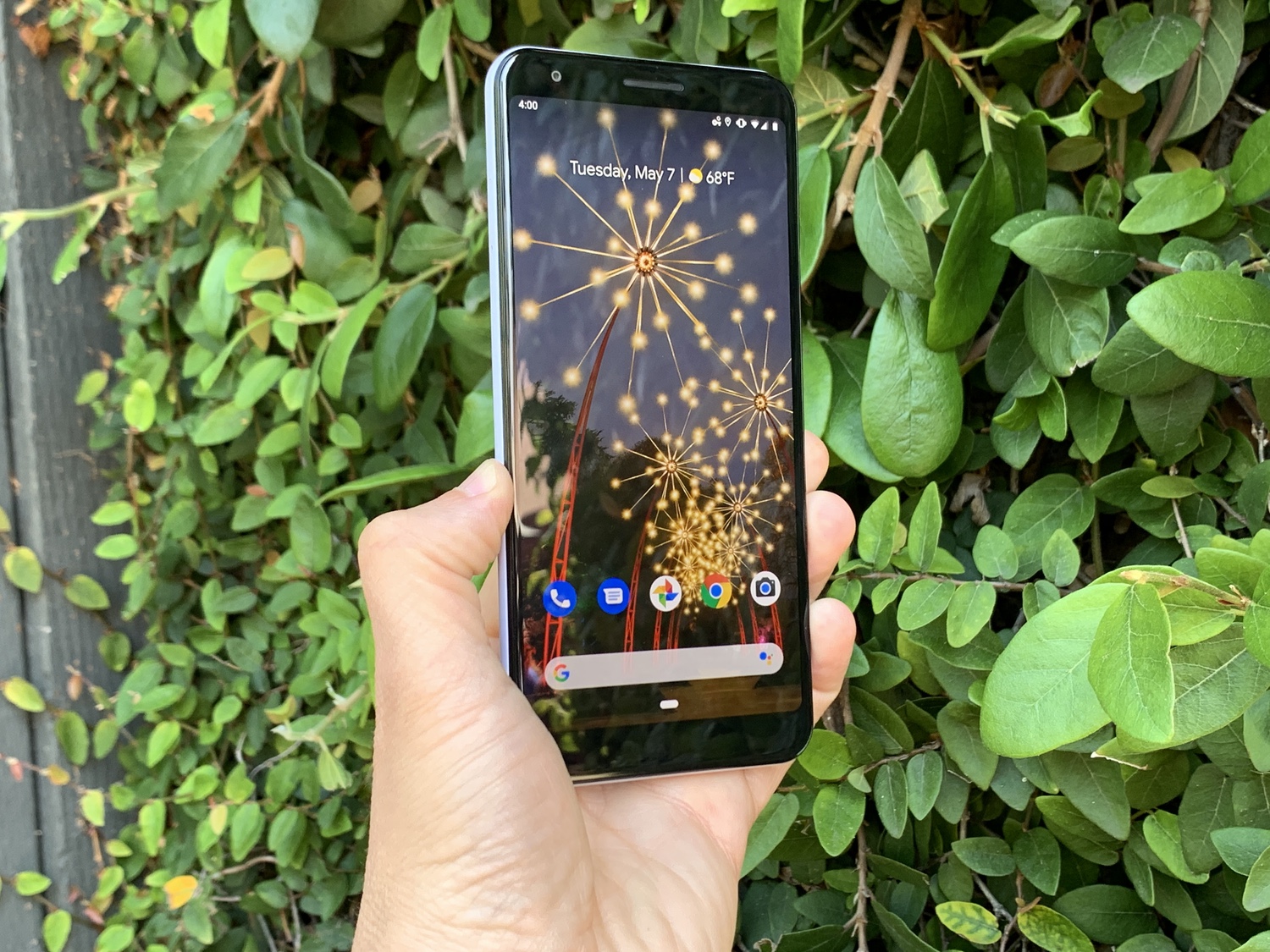Tom's Guide Verdict
If you balk at paying top dollar for big-screen phones, get the Pixel 3a XL. Its camera nearly matches that of the more expensive Pixel 3 XL, and it lasts longer on a charge. If you demand the best performance, though, consider slightly more expensive options like the Galaxy S10e or iPhone XR.
Pros
- +
Camera measures up well to the Pixel 3 XL’s
- +
Affordable price tag
- +
Long-lasting battery
- +
Headphone jack
- +
Good performance for a midrange model
Cons
- -
Dim screen
- -
Prominent bezels
- -
No wireless charging or water resistance
Why you can trust Tom's Guide
Smartphone makers have a problem. They keep packing more and more features into their phones, driving up the cost. And increasingly, people aren't buying them.
Market research firm IDC says smartphone sales fell 6.6 percent in the first quarter of 2019, the sixth consecutive quarter they've declined. No one's felt that pain more acutely than Google, which reported that sales of the Pixel 3 are off the pace set by the Pixel 2. And that has to be disappointing, given that the Pixel 3 is one of the best camera phones you can buy today.
Google's solution: Take all the things people like about the Pixel 3 and put them in an Android phone that costs much, much less. The result is the Pixel 3a XL, a phone that looks an awful lot like the Pixel 3 XL but saves you $420. The smaller Pixel 3a, at $399, lets you save even more.
But do those savings come at a cost? Opting for the Pixel 3a XL over Google’s pricier flagships means giving up a little bit in terms of performance. In the end, those sacrifices are well worth it for an affordable phone that doesn’t skimp on its camera or on battery life.
Pixel 3a XL Specs
| Phone | Pixel 3a XL | Pixel 3 XL |
| Starting Price | $479 | $899 |
| Screen (Resolution) | 6-inch OLED (2160 x 1080) | 6.3-inch OLED (2960 x 1440) |
| CPU | Snapdragon 670 | Snapdragon 845 |
| RAM | 4GB | 4GB |
| Storage | 64GB | 64GB/128GB |
| Rear Camera | 12MP (f/1.8) | 12MP (f/1.8) |
| Front Camera | 8MP | 8MP wide-angle (f/2.2) and 8MP (f/1.8) |
| Battery | 3,700mAh | 3,430mAh |
| Battery Life (Hrs:Mins) | 11:41 | 9:30 |
| Headphone Jack? | Yes | No |
| Colors | Clearly White, Just Black, Purple-ish | Clearly White, Just Black, Not Pink |
| Size | 6.3 x 3 x 0.3 inches | 6.2 x 3 x 0.3 inches |
| Weight | 5.9 ounces | 6.5 ounces |
Pixel 3a XL Price and Availability
You can buy the Pixel 3a XL right now, and you've got more carrier options than you've ever had from Google. Previous Pixels were restricted to either Verizon or Google's own Google Fi wireless service, unless you opted for an unlocked model. With the Pixel 3a XL, Sprint, T-Mobile and US Cellular join Verizon and Google Fi among the carriers currently offering the Pixel 3a XL. Discount carrier Visible, which uses the network of parent company Verizon, says it will offer the new Google phone in June. And as before, you can buy the phone unlocked and use it on any network (like, say, AT&T, which is otherwise conspicuous by its absence).
The Pixel 3a XL costs $479, a significant discount from the $899 Google charges for the Pixel 3 XL. But that price tag is also lower than the $549 starting price for the OnePlus 6T, another phone that attempts to pack premium features into a lower-cost device. That seems to be the exact market Google is courting with the Pixel 3a.
Design
At first glance, you'd be hard pressed to tell the difference between the Pixel 3a XL and its more expensive Google sibling. At 6.3 x 3 x 0.3 inches, the 3a XL is only marginally taller than the Pixel 3 XL, and the phone's share Google's signature two-tone design. The Pixel 3 XL does pack in more screen real estate than the budget model — 6.3 inches to the 3a's 6-inch screen — because the 3a features chunkier bezels. On the bright side, no notch, at least.
Once you hold the Pixel 3a in your hand, though, it's a little easier to detect where Google was able to save some money on this phone. The Pixel 3a is made out of polycarbonate instead of metal, and the feel in your hand is noticeable. The glass back of the 3 XL has a bit more heft to it — it outweighs the Pixel 3a XL by a little more than half-an-ounce — but you’ll only notice that when you pick up either phone. When I’ve got them laying face down in front of me, as I have for the last few days, I will occasionally reach for the wrong Pixel.
There’s a sacrifice to be made with the Pixel 3a XL’s cheaper plastic casing: it means the new phone can’t charge wirelessly like the Pixel 3 XL can. Still, if you’re worried about settling for a cheap-looking device, the Pixel 3a XL passes the eyeball test with ease.
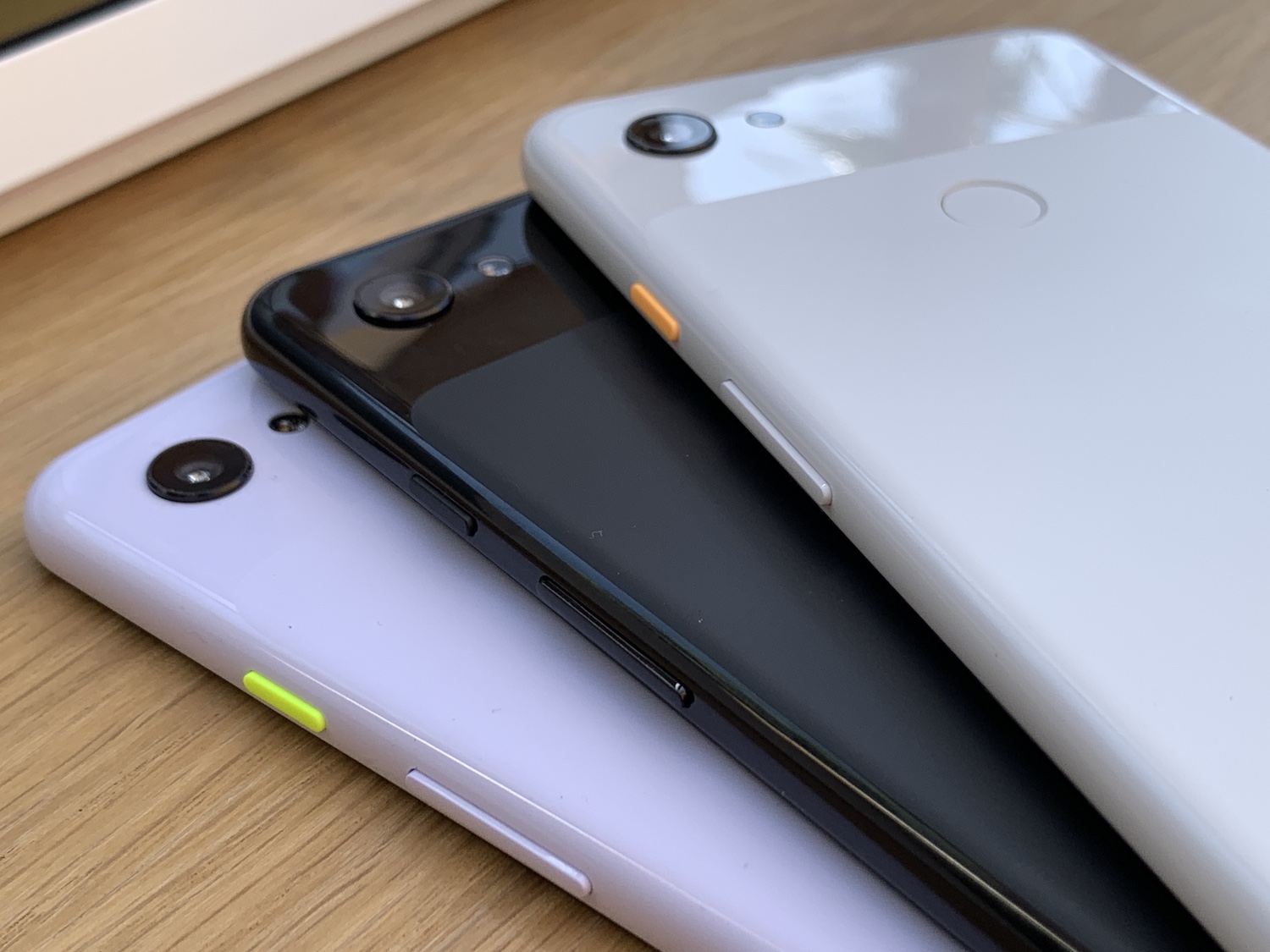
You have three color options for the Pixel 3a XL, and two of those are standard Google choices — Just Black and Clearly White. The 3a XL adds a Purple-ish option to the mix, and while my colleague Mark Spoonauer favored it in his hands-on time with the smaller 3a, I find the light purple hue a little too subtle for my tastes. I do like the Google touch of adding a splash of color to the power button — it's orange on the Clearly White model and lime on the Purple-ish version.
Google dropped the 3.5mm headphone jack from recent Pixels, a move that's actually more divisive than any notch designs. Thankfully, the jack returns to the top of the Pixel 3a XL, which will likely increase the phone's appeal. I certainly appreciated the option to attach wired headphones and charge at the same time when I plugged in a set of Apple’s EarPods to rock out to music. (What? Google doesn’t include any headphones in the Pixel 3a XL box.)
Display
The screens on Google's phones aren't renowned for their brightness, and unfortunately, that trend continues with the 6-inch Pixel 3a XL. I watched some Champions League highlights in the bright sun at Google's I/O developer conference, and it was hard to make out the distinctive red jerseys worn by Liverpool. (Barcelona's obnoxious day-glo away shirt was easy to pick out despite the glare.) That was with the screen set to maximum brightness, so I would expect a pretty low reading once I have the chance to measure the screen's brightness with a light meter.
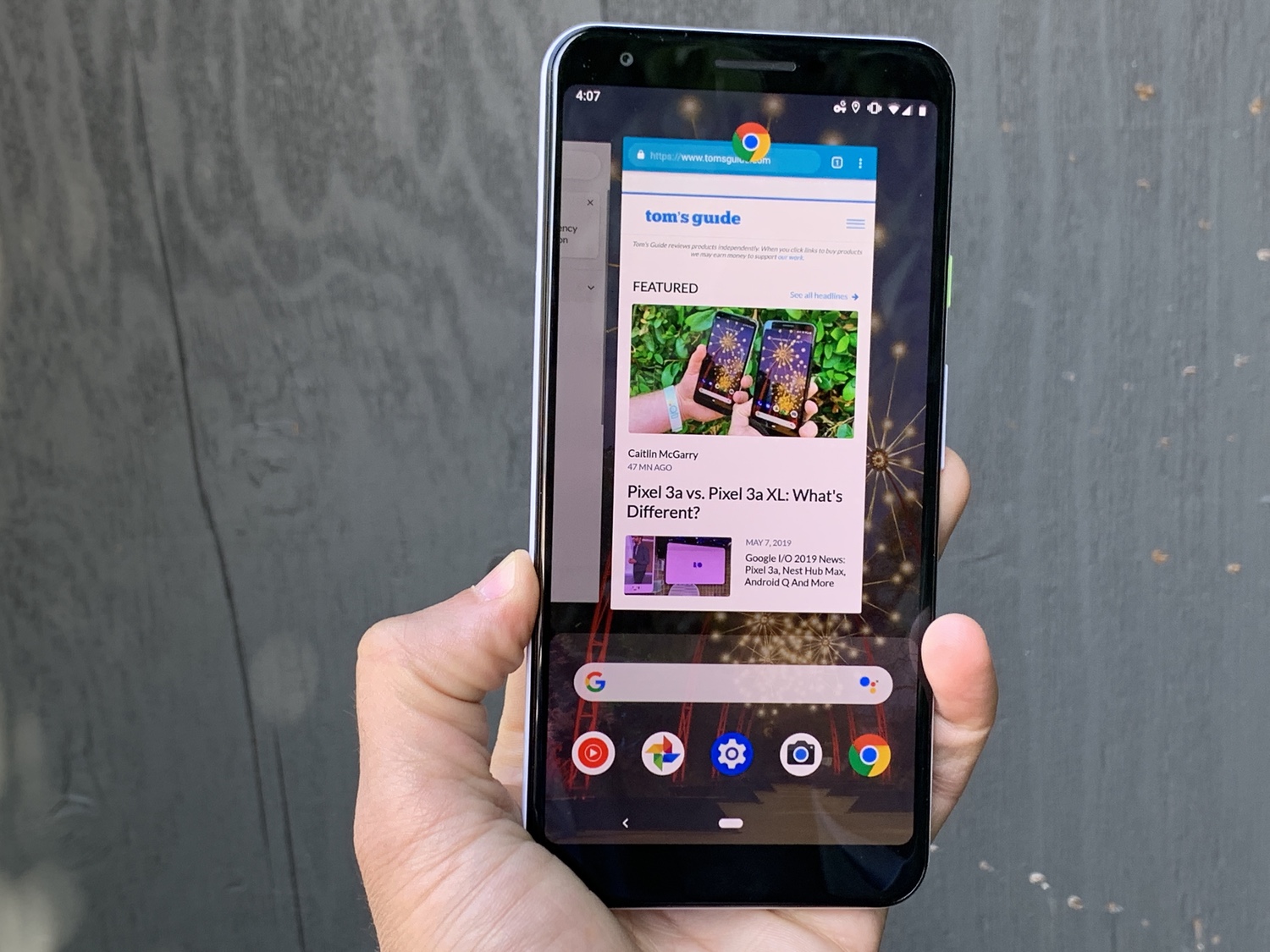
Things only improve marginally when you’re indoors. Watching the Sonic The Hedgehog Trailer on YouTube, Sonic was a bright streak of blue, but any dimly-lit scenes looked murky with details lost in the shadows. When Jim Carey appeared in a black suit, standing against a black background, he looked like a disembodied head on the Pixel 3a’s screen. (This might improve the movie, actually.) The same issue flared up when I watched the creepy trailer for HBO’s upcoming series based on The Watchmen: the trailer is supposed to be dark and moody, but on the Pixel 3a XL, a multitude of men wearing Rorschach masks just looks like an indistinct mess.
That wasn’t the case when I watched those same trailers on a Pixel 3 XL, where the dark scenes looked dark, but the blacks looked truer making other details in the shot stand out. Both Google phones use OLED panels, but this may be a case of not all OLEDs being created equally. The Pixel 3a XL’s glass display is highly reflective, and a lot of times when I should have been seeing video, I was distracted by my own face staring back at me.
Pixel 3a XL Camera
One area where Google didn't skimp was with the Pixel 3a XL's camera. It's the same single 12-megapixel rear shooter you'll find on the more expensive Pixels. As with those phones, Google is leaning on software and artificial intelligence to do the photographic heavy lifting, and so a lot of the Pixel's more impressive features — Night Sight, Super Res Zoom and Portrait Mode effects powered by computational photography — are on hand in the Pixel 3a XL.
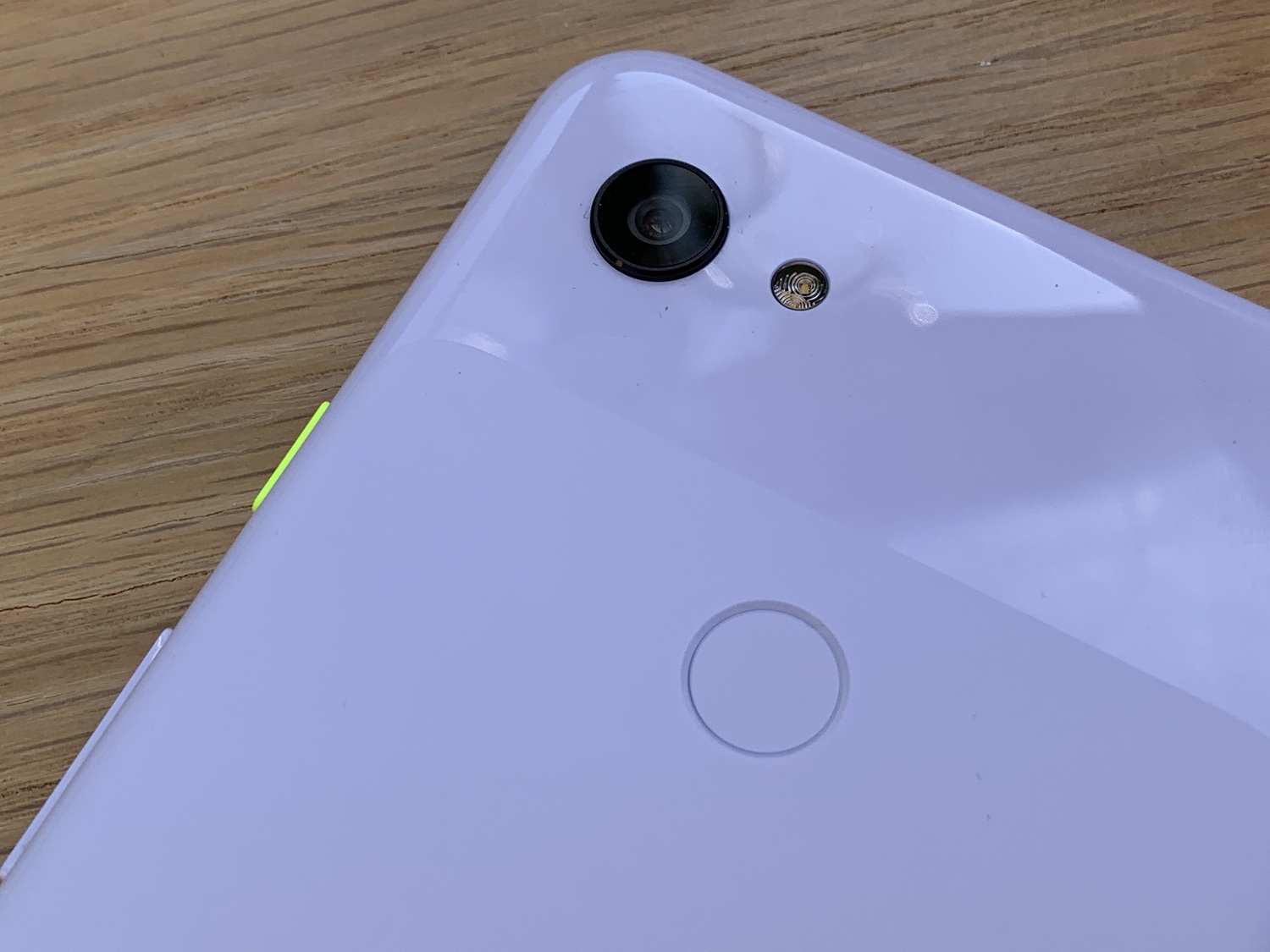
Up front, the Pixel 3a XL scraps the second lens Google stuck on the front of the Pixel 3 and 3 XL. That means you won't be able to take wide-angle selfies — helpful when you want to squeeze in more people or capture more background details in your self-portrait. But since dual front shooters are a relatively new addition to smartphones, and generally restricted to more expensive models, I can't imagine budget-minded shoppers will be put off by having to make do with one lens.
So the million-dollar question — well, more specifically, the $420 question given the price difference between Google's two XL models — is this: can the Pixel 3a XL's camera pull off the same great photos we've come to expect from the pricier Pixels? Having used both phones side by side, I think the Pixel 3a matches up well against its pricier counterpart.
Look at this photo of a plate of scrambled eggs, and you'd be hard-pressed to tell which one was shot by the more expensive phone. Each one offer the same brightly colored vegetables and noticeable flecks of pepper, with a slight overexposure in the upper right corner. The focus is a little deeper on the Pixel 3 XL's shot, but you'd only notice that after staring long and hard at both photos.
The Pixel 3a XL pulls off features such as Night Sight just as capably as the 3 XL. This photo of a collection of miniature baseball hats in my unlit office at dusk would be a murky smear if Night Sight weren't enabled, but the Pixel 3a XL and 3 XL both capture the shot, thanks to Google's AI-powered low-light feature. The 3 XL's photo is markedly better — it captures more realistic color, and if you zoom in, you can read the words on the plaques — but the fact that a $479 phone like the 3a XL can capture a decent image in near darkness is still pretty impressive.
Testing out a bokeh effect in the Portrait Mode yielded similar results. The Pixel 3 XL's photo is better, and not just because my daughter deigned to look at the camera in that shot. Her skin seems more natural and freckled — a fault of me not adjusting the face-retouching features on the Pixel 3a XL. Also the Pixel 3a XL erased a loose strand of hair that you can see in the 3 XL's shot. But the color, composition and blur in the 3a XL's shot looks pretty good, if not as pristine as what the Pixel 3 XL accomplished.
I take the Pixel 3 XL with me whenever I have to photograph something for Tom's Guide. If I grabbed the Pixel 3a XL by mistake, I think the resulting images would look nearly as good.
How about when the Pixel 3a XL goes up against another well-regarded camera phone, in this case the iPhone XR and its lone 12-MP camera? I took a photo of the swimming pool where my daughter was practicing, and the conditions were hardly ideal: the sun is setting just off to right of the shot, creating a strong glare on that side of the frame. The Pixel 3a XL tries its best, but the resulting photo looks pretty muted, with the trees in particular looking like indistinct black masses. The iPhone XR wins here, thanks to the Smart HDR feature that captures multiple exposures for more details, even in the shadows.
When I zoom in, the iPhone XR maintained only a slight edge. The colors remained a little more true in the iPhone's photo, while the Pixel 3a XL gave everything a bluish cast, even on that white Alameda Gators sign hanging off the back fence. That said, you can clearly read the sign in the Pixel's shot as a result of Google's Super Res Zoom feature, and swimmers and lane lines look less pixelated than they do in the iPhone XR photo.
Things even out when we're not staring directly into the sun, though. Either one of these photos of a rose in a public park would make for a perfectly fine shot, with the winner coming down to personal taste. I think the iPhone XR over-saturates some of the color, particularly in the rose's petals, and I prefer how the Pixel 3a XL brings the surrounding leaves and buds into sharper focus. The left third of the iPhone XR's photo also looks a little too washed out for my taste.
When it was time to test front cameras, the TrueDepth camera on the iPhone XR seemed evenly matched with the Pixel 3a XL's 8-MP lens. I like the way the XR framed me a little better, and my skin tone looks more appealing in the iPhon'e shot, though I do think the leaves on the lemon tree behind me look a little unnatural, especially compared to the Pixel's more understated colors. The sky in the Pixel photo isn't as blown out as it appears in the iPhone image.
Applying a bokeh blur to each self-portrait shows that Google handles such effects with greater aplomb, even in its budget phone. The Pixel 3a XL restricts the blur effect to the background, causing me to pop out of the photo in a more striking way. The iPhone XR takes a different approach, where the blur bleeds into the right side of my face. Also, Apple's phone was either flummoxed by the towel I have draped over my shoulder or it chose to blur that, too; in either case, it's a look I don't care for.
Pixel 3a Performance
The Pixel 3a XL uses a Snapdragon 670 mobile processor, a less powerful chipset than the Snapdragon 845 which powers most of the leading Android phones that came out in the last year, including the Pixel 3 XL. And our initial benchmarking confirms that you’ll give up some processing power by opting for the Pixel 3a XL and its lower price.
On Geekbench 4, which measures overall performance, we recorded a multicore score of 5,197 for the Pixel 3a XL. As you might imagine, that’s behind the Pixel 3 XL’s result of 7,684; it even trails the 6,282 score we recorded for the Pixel 2, and that phone’s running on a Snapdragon 835.
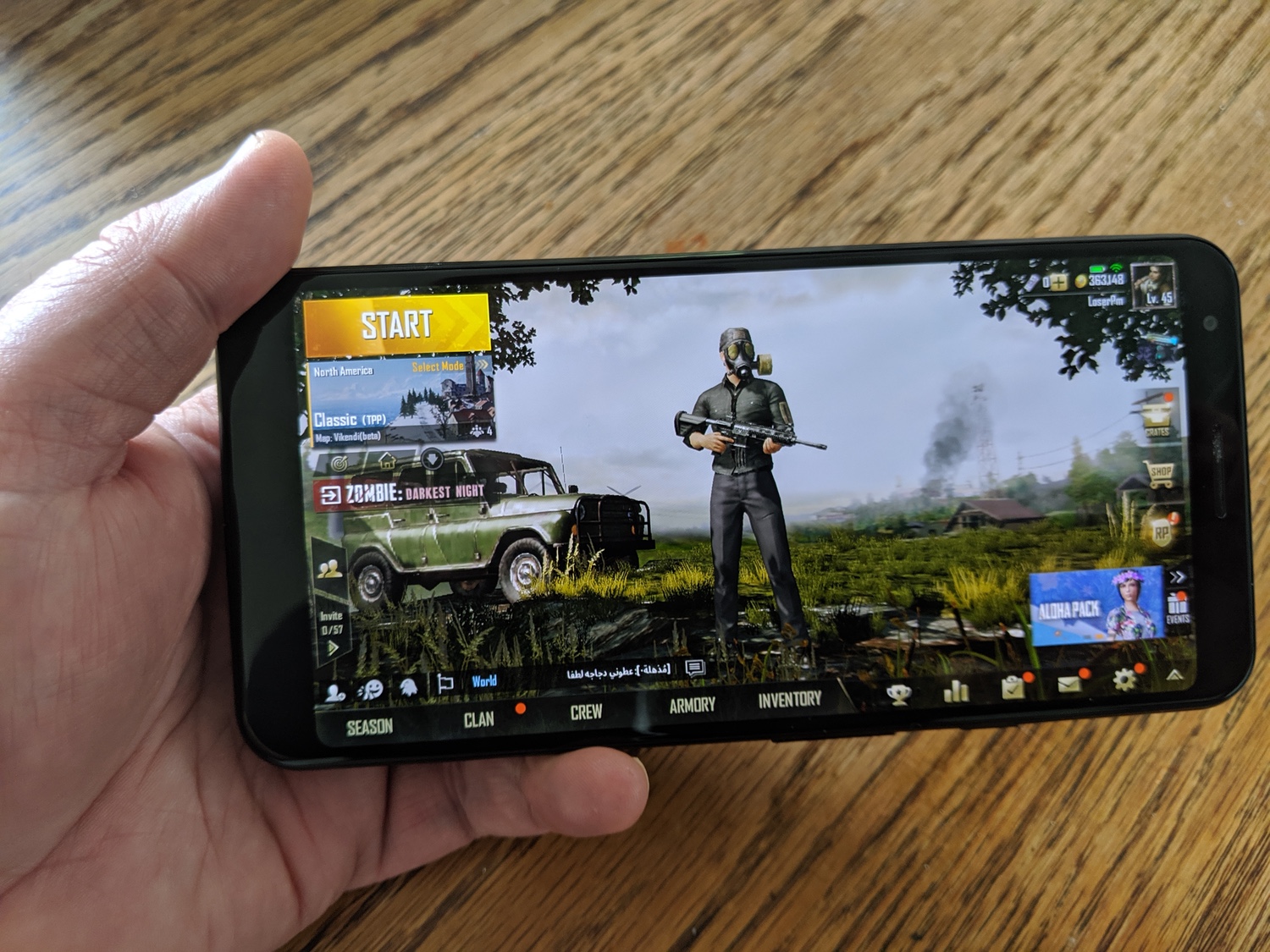
Compare the Pixel 3a XL to phones powered by the same processor class, though, and Google’s phone fares much better. The Moto G7 and its Snapdragon 632 processor turned in a 4,814 result, while the Snapdragon 636-powered Nokia 7.1 scored 4,934. The Pixel 3a XL may not be able to keep pace with flagship devices, but it certainly can match most midrange models.
The story is the same for graphics. 3DMark’s Sling Shot Extreme benchmark is really designed to test the graphics on high-end phones, which explains why the Pixel 3a XL’s 1,628 score can’t really compare to the 4,396 mark that the Pixel 3 XL reached. But the Moto G7 (512) and Nokia 7.1 (950) stumble badly in that high-end test. (Like the Nokia 7.1, the Pixel 3a XL maxes out 3D Mark’s Ice Storm Extreme test, which is aimed more mainstream devices.) The Pixel 3a XL should be able to handle more demanding games than many of the phones in its price class.
And that bore out when I played PUBG Mobile on the Pixel 3a XL. Running the game at its highest graphic settings, I didn’t notice any lag or dropped frames as I sprinted across the battlefield. After I died — a distressingly common occurrence for me in multi-person shooters — I was able to spectate as my teammates carried on with me without the jittery experience I sometimes get on my iPhone SE. Likewise, I was able to switch easily between apps on the Pixel 3a XL, thanks to the 4GB of RAM Google includes with its phone.
You only have one storage option with the Pixel 3a XL, which comes in a single 64GB capacity. There's no way to add on storage, but at least all your photos are automatically backed up to Google Photos, so that's one way to conserve space on the phone.
Battery
A bigger screen requires a bigger battery, and Google has gone with a 3,700 mAh power pack for the Pixel 3a XL. For context, that's larger than the 3,430 mAh battery in the Pixel 3 XL, so you would hope that Pixel 3a XL will improve upon the lackluster 9 hour, 30 minute result that the more expensive Pixel turned in on our battery test, which involves continuous surfing over LTE with the phone’s screen set to 150 nits of brightness.
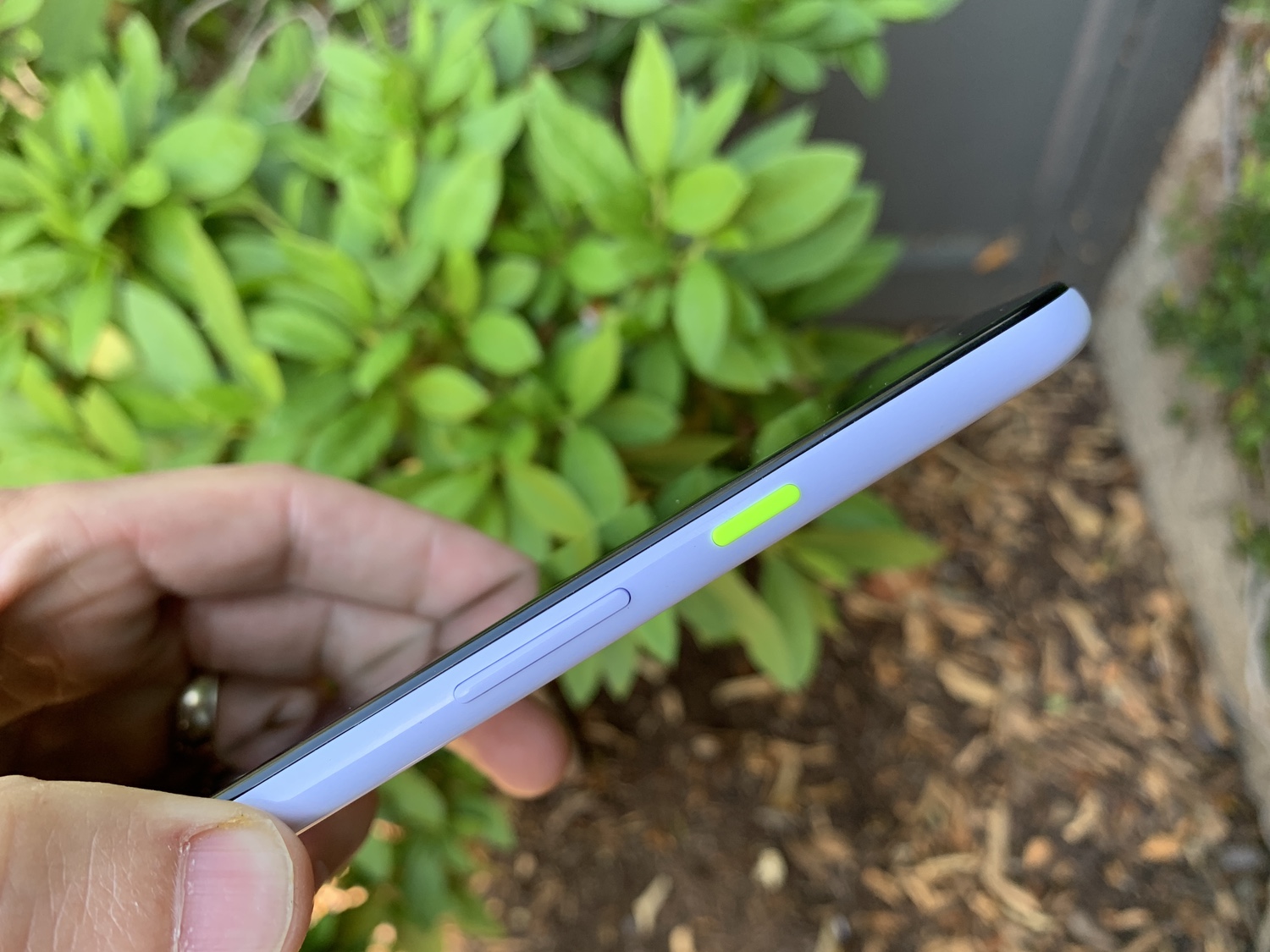
And the Pixel 3a XL delivers. When we ran our battery test on the phone, it lasted for 11 hours, 44 minutes, which places it among the longest-lasting smartphones we've tested in the past year-and-a-half. That result is 15 minutes behind the Pixel 3a's time, which is a little puzzling since that phone has a smaller 3,000 mAh battery.
At no point in using the Pixel 3a XL did I have to worry about having to find an electrical outlet. I ran an unofficial battery test using Verizon's network — our official test tries to use T-Mobile so that we can have comparable results — and even though I started the test at dinner time, the Pixel 3a XL was still running when I had the breakfast the next morning. That result may not be official, but it's a pretty good indicator that you can make it through the day without needing to charge your Pixel 3a XL.
When it's time to recharge the phone, Google says that 15 minutes of charge time will give you 7 hours of battery life. Again, my experience suggests that Google’s not pulling your leg: I plugged the phone into charge with the battery indicator at 35%, and it was back to 56% 15 minutes later. After my battery test depleted the Pixel 3a XL’s power, 15 minutes of charging got the battery indicator back to 22 percent.
Software and special features
The Pixel 3a XL ships with the Android 9 Pie, the latest version of Google's mobile OS. Because Google promises three years of security and software updates for its phones, that means you'll get Android Q when that update arrives later this year.
You can also expect the other software features that highlight Google's more expensive phones. That includes Call Screening, a feature Google introduced last year where the Google Assistant intercepts calls and deals with robocalls on your behalf. Speaking of the assistant, you can use the Pixel 3a XL's Active Edge feature to summon Google's digital helper by squeezing the sides of the phone, just as you can with the Pixel 3.
Bottom line
While we still need to complete some display and battery testing, I’ve seen enough of the Pixel 3a XL to recommend Google's latest as a low-cost alternative for fans of big-screen phones. The two most important things that a smartphone can provide are a good camera and long battery life. The Pixel 3a XL delivers on both counts, with pictures that look nearly as sharp as what you get from Google’s more expensive Pixels, while also lasting longer on a charge.
You’ll make some sacrifices. The design is fairly pedestrian, especially in this era of edge-to-edge screens, and I was disappointed by how dim the OLED panel is on the Pixel 3a XL. But one of the biggest compromises Google made — a slower processor — won’t really impact the vast majority of smartphone users. You certainly won’t notice $320 to $420 worth of difference in how this phone runs compared to the Pixel 3 and 3 XL.
The Pixel 3a XL isn’t a flagship rival by any means. But for $479, it doesn’t have to be. By delivering on the important things you really want from a smartphone, it’s a viable option if you’ve had enough of paying top dollar for your mobile device but don’t want to resort to a bare-bones phone just to save some money.
Image Credits: Tom's Guide
Philip Michaels is a Managing Editor at Tom's Guide. He's been covering personal technology since 1999 and was in the building when Steve Jobs showed off the iPhone for the first time. He's been evaluating smartphones since that first iPhone debuted in 2007, and he's been following phone carriers and smartphone plans since 2015. He has strong opinions about Apple, the Oakland Athletics, old movies and proper butchery techniques. Follow him at @PhilipMichaels.
-
InMesa I'm older and spent a couple weeks reading every possible review before deciding to purchase the Pixel 3A XL. NOT ONE review mentioned that it will NOT cast to a ROKU TV! NOT ONE! So I can't view my photos on my TV without spending more $$$. No one thought to mention this?Reply
